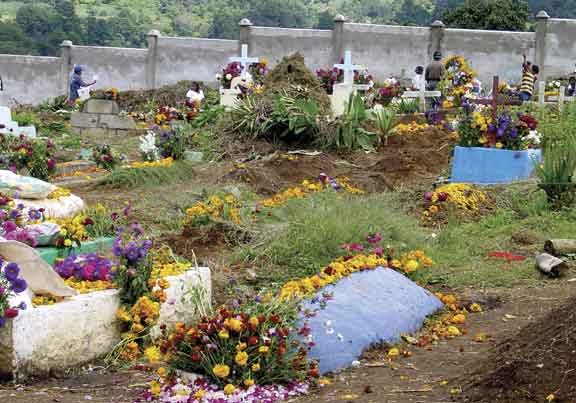Crossing Over
Although death is a natural and inevitable part of the human experience, how we relate to it is largely influenced by religion and culture. The way people celebrate death reflects their attitude and philosophy about life as well as death.
Some cultures fully embrace death and engage with it through a variety of rituals. In Malaysia the body is buried, and then reburied at a future time. Between the two funerals, relatives look after the person and bring him or her a meal twice a day. Among Orthodox Jews, the bereaved remain at home for seven days. A transitional period includes 30 days of mourning dress, a year of abstinence from recreation and ends a year later with the dedication of the tombstone.
In Latin America, on Nov. 1 and Nov. 2, the memory of deceased ones is joyfully celebrated. Festivities include the preparation of special foods and gifts, for it is believed that souls return on this day. Graves and altars are elaborately decorated, and pillows and blankets are left out so the deceased can rest after their long journey. Memories of the lost ones are relived through the stories told about them on this day.
Customs and rituals play an important role. Apart from the rituals that mark biological death, the rituals of mourning support the bereaved to adjust to the loss of loved ones. They provide a way for people to mourn and restore a sense of order and meaning in their lives. The rituals of social death, like the final burial in Malaysia or the dedication of the tombstone in the Orthodox Jewish tradition, provide closure for those left behind. Continuity with the past occurs through the El Día de los Muertos celebrations.
It has been said that in North America and in parts of Europe a “death-denying” society has evolved. Death has come to be viewed as a medical event and as a disease rather than a normal phase of life. The taboos around death are rooted in fear, which is reflected in how it is handled in these societies.
Without rituals people are left unprepared for the passing of loved ones. There is no social holding of the grief, and one is left to mourn alone.
Death is more about those left behind because to the soul, death is a release. It is a mystery in which the living are the bystanders. Rituals enable us to trust the mystery.

thanks for the article, karmen! however, i am still curious as to which particular type of foods are involved during the bereavement period, if theyre utilized at all. and if so, is there any kind of symbolic meaning to them? thanks for your help!